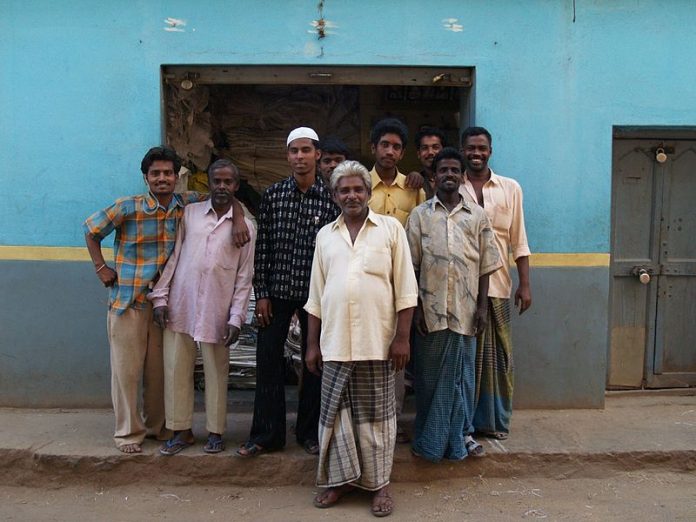Saad Razi Shaikh for TwoCircles.net
Marginalized groups do not need saviours. What they require is a space and a voice of their own.
In his book ‘Secularism confronts Islam’, the French author Olivier Roy observed that ‘when Muslims are called to adopt a reformed and liberal Islam, they’re expected to situate themselves in relation to an analytical framework that has been prepared for them without asking the meaning of their practices and the nature of choices involving their identity.’ This is an interesting remark, particularly so when read in the backdrop of identity politics in India. Recently, we have had a robust debate on the questions of burqa and trishul, beginning with the unfortunate equivalence made between the two by Ramachandra Guha. The debate however found a life of its own beyond the initial comment and touched on issues of caste, the value and language of liberalism, and so on.
What it brought to focus however was the continued infantilization of the Muslim community in the mainstream, that undermines their right to speak for themselves, and indeed define themselves. It is not a condition unique to Muslims however. Bahujans, dalits and adivasis find themselves in a similar quandary, the realization that they’re objects of a study, but rarely its authors. We may call these groups subaltern or marginalized, but we need to remind ourselves that there are structural conditions at play that shuts them to the margins, that for groups to be subalterns there has to be a hegemonic group relegating them to that status.
Their marginalization is both material and ideational. In the marketplace of ideas, in academia and mass media, there is a decisive bias in favour of men, upper-castes, liberals. This is not to say that other groups, outside of this coterie are completely voiceless; on the contrary they are increasingly finding a space through social media, and carving out their own niche. It is this space that allows them to contest the language, ideology and assumptions of the mainstream intellectuals.
Yet they find room in our mainstream columns infrequently and mostly when matters that might be directly related to them are in the news. Even the latter might not hold true, as matters directly concerning certain groups, for example the burqa and skullcap in case of Muslims, would be used as a prop in a debate that wasn’t initiated by the group in the first place. Outside of its specifics, the Mander-Guha debate can be situated in the broader picture of who speaks (saves?) the Muslims. It is not that Muslims are a homogenous group across India, far from it, they’re as diverse as any other community, split over caste, language, sects and so on. To speak for them is to bunch them together in a one single cohesive unit, ignoring thereby the diversity and contestations within the community itself. It also allows the task of boxing them into watertight clichés much easier, thereby creating a simplistic framework that enables one to idealize Muslims one day and demonize them the other day. It’s akin to creating a caricature of a community, instead of being sensitive to the lived experiences of its members. It is structure that shuts out their voice, their agency, their right to participate as equal citizens.
Who speaks for Muslims? Is it our concerned liberal who feels for the ghettoisation of the community, without enquiring as to what made the Muslims retreat to it in the first place? Is it the left, that wants them to uplift them, without being sensitive to the limiting factors unique to them? Is it the sympathetic nationalist, who would want Muslims to rise above their ‘Muslimness’? Or is it the Muslim Ashraf men, who hold much monopoly over the community affairs, even if they represent a tiny minority within it? Or do our Bollywood stars speak for Muslims, even as they’re completely divorced from the living conditions of the majority of the community? Or is it our reformers, who paint all of customs and traditions as dogmatism and revivalism, unaware of its role in giving shape to the identities of most of us?
Or is it our mainstream intellectuals? For just like white, privileged men in the western world, in India we’ve savarna men, who too try to explain everything under the sun for the poor rest of us. It’s not unlike ‘mansplaining’, the term that rose in the wake of Rebecca Solnit’s article in 2008, to explain the behaviour of some men to compulsively and condescendingly explain things to women. As Solnit writes,
‘Men explain things to me, and to other women, whether or not they know what they’re talking about. Some men. Every woman knows what I mean. It’s the presumption that makes it hard, at times, for any woman in any field; that keeps women from speaking up and from being heard when they dare; that crushes young women into silence by indicating, the way harassment on the street does, that this is not their world. It trains us in self-doubt and self-limitation just as it exercises men’s unsupported overconfidence.’
Through this, men reduces women to ‘an empty vessel to be filled with their wisdom and knowledge.’ This is an article that’s a decade old, yet its crux, the idea of upholding the agency of the oppressed is as important as ever. And how does one achieve that? By not encroaching on the space and voice of the marginalized. By resisting the urge to compulsively comment on and define people who already have precious little social and economic capital. One does not need to become a voice of the voiceless. Rather, one must dismantle the conditions that render certain groups voiceless. And while one is at it, it would be a good idea to pass the mike.
Saad Razi Shaikh is a journalist based in Delhi. Presently, he is studying international politics. He can be reached on twitter @writweeter


